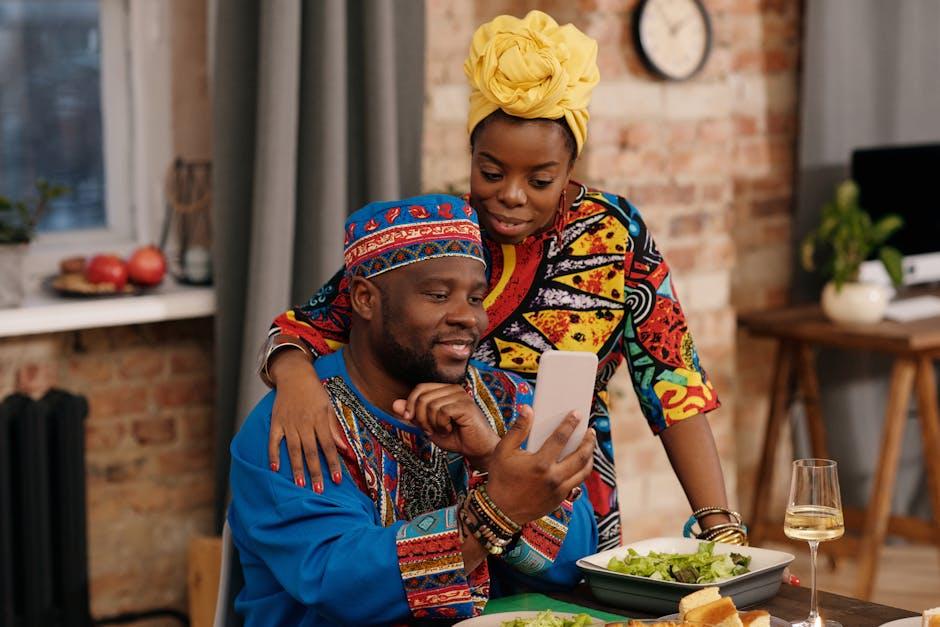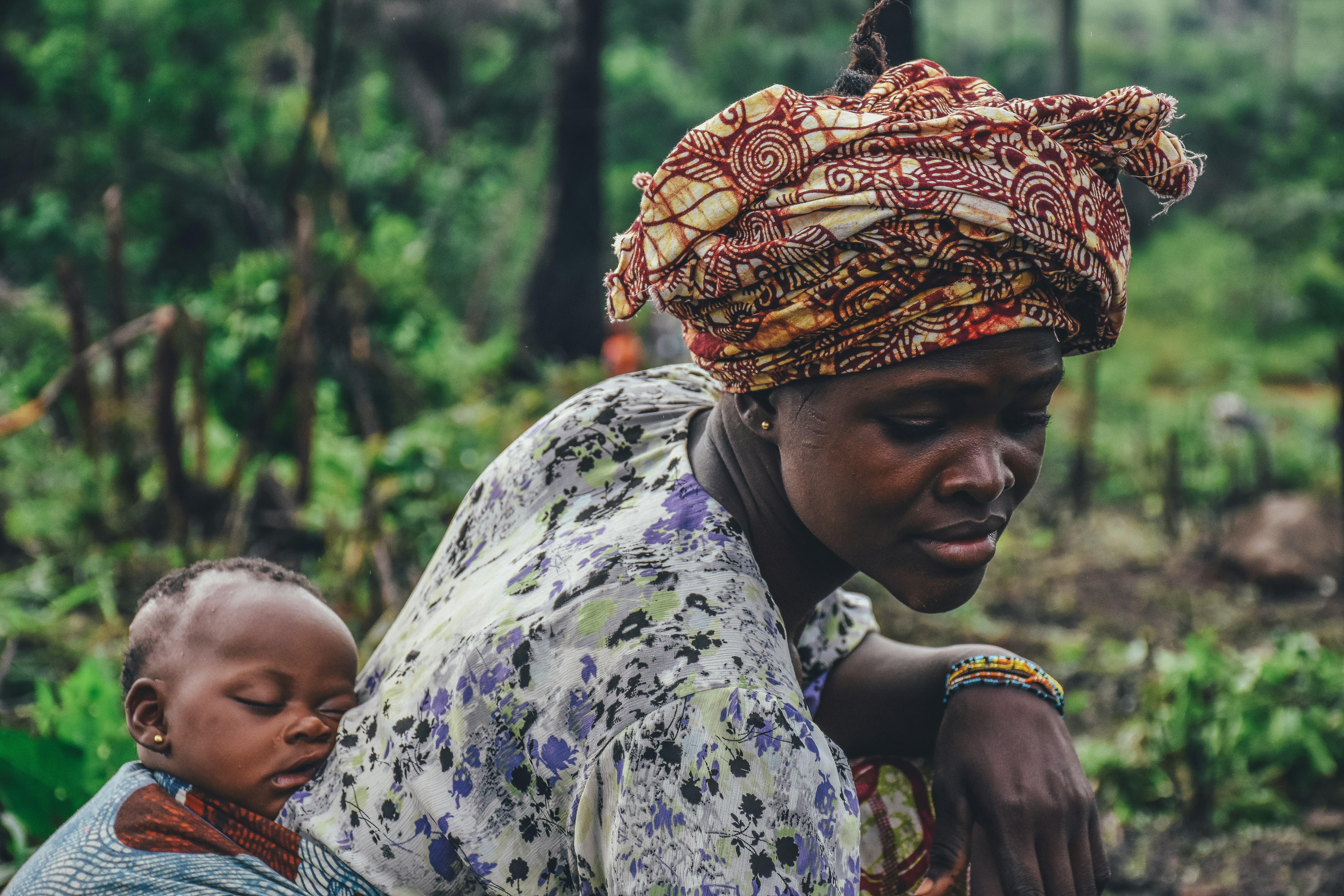As the golden hues of the African sunset kiss the horizon, the continent beckons travelers with its vibrant tapestry of cultures, languages, and landscapes. From the bustling souks of Marrakech to the serene savannahs of the Serengeti, Africa is a land of captivating contrasts and ancient traditions. For the intrepid explorer, understanding and respecting the diverse cultural etiquette across its 54 countries is not merely a courtesy but a bridge to deeper connections and richer experiences. This guide aims to navigate the intricate dance of customs and courtesies that await the curious traveler, offering insights that transform a simple journey into an enriching odyssey of understanding and respect. Whether you’re sharing a meal in a rural village or haggling in a local market, knowing the nuances of African hospitality and etiquette can open doors to authentic interactions and unforgettable memories.
Respectful Greetings and Gestures
When traveling through the diverse tapestry of African nations, understanding and practicing local greetings and gestures can enrich your experience and demonstrate respect for the culture. While the specifics can vary greatly from one region to another, there are some general principles to keep in mind. For instance, handshakes are common in many African countries, but the manner in which they are executed can differ. In some areas, a handshake may be accompanied by a light touch on the shoulder or a unique finger snap, while in others, a more prolonged grip is customary.
It’s also important to note the use of titles and formal address. When greeting elders or those in positions of authority, showing deference through respectful language is crucial. Here are a few tips to consider:
- Eye Contact: In some cultures, direct eye contact can be seen as confrontational, while in others, it’s a sign of sincerity.
- Body Language: A slight bow or nod can be a sign of respect in various communities.
- Use of Right Hand: When offering or receiving items, use your right hand as a sign of politeness.
By being mindful of these gestures, you contribute to positive cultural exchanges and show appreciation for the traditions that shape the vibrant communities you visit.

Navigating Local Dress Codes
When traveling through Africa, understanding and respecting local attire customs is crucial. Each region boasts its own unique blend of traditions, often reflecting deep-rooted cultural values. Modesty is a common theme across many areas, with clothing choices that cover shoulders and knees often appreciated. In predominantly Muslim regions, such as parts of North and West Africa, it’s advisable for women to wear headscarves or shawls. Men may also be expected to wear long trousers instead of shorts.
- East Africa: Brightly colored fabrics and intricate patterns are prevalent. In places like Kenya and Tanzania, you might encounter the Kanga or Kitenge, traditional cloth wraps worn by both men and women.
- Southern Africa: While urban areas may embrace Western styles, rural communities might still prefer traditional garments like the Shweshwe fabric in South Africa.
- West Africa: Regions such as Nigeria and Ghana are known for their vibrant textiles. The Ankara or Kente are popular choices, often worn during festivals and special occasions.
Being mindful of these dress codes not only shows respect but can also enhance your travel experience by allowing you to connect more authentically with local communities. Always carry a lightweight scarf or shawl; it’s a versatile accessory that can easily adapt your outfit to meet cultural expectations.

Understanding Meal Traditions
Embarking on a culinary journey through Africa is an invitation to explore a tapestry of flavors and traditions, each as diverse as the continent itself. As a tourist, understanding the nuances of meal traditions can enrich your experience. One notable custom is the emphasis on communal eating, where sharing meals from a common plate or bowl is seen as a gesture of unity and trust. In many African cultures, eating with the right hand is considered proper etiquette, while the left hand is reserved for less savory tasks. Embrace this practice by washing your hands before meals and joining in the communal spirit.
When invited to an African home, it’s customary to bring a small gift for the host, such as fruit or sweets. It’s also respectful to wait for the eldest member of the gathering to start the meal. During the meal, you might encounter the delightful tradition of offering the best portions to guests, reflecting the deep-rooted value of hospitality. Here are a few general tips to keep in mind:
- Remove your shoes before entering a home, unless instructed otherwise.
- Compliment the food, as it’s a sign of appreciation for the host’s effort.
- Participate in conversations, which often accompany meals, to show engagement and interest.
By observing these practices, tourists can gain a deeper understanding and appreciation of the rich cultural heritage that defines African meal traditions.

Appropriate Photography Practices
- Ask for Permission: Before taking photos of individuals or groups, it’s essential to ask for their consent. In many African cultures, a photograph can be seen as intrusive or disrespectful if taken without permission. A simple smile and polite request can go a long way.
- Respect Sacred Sites: Many locations, such as religious sites or cultural landmarks, may have restrictions on photography. Always look for signs or guidelines, and if in doubt, inquire with a local or a guide.
- Avoid Stereotyping: While capturing the vibrant life and landscapes of Africa, be mindful not to reinforce stereotypes. Focus on diverse and authentic narratives that reflect the rich tapestry of cultures and traditions.
- Engage with the Community: Building rapport with local communities not only enriches your travel experience but also creates a more comfortable atmosphere for photography. Engaging conversations often lead to more meaningful and respectful photo opportunities.
- Be Mindful of Privacy: Remember that everyone deserves privacy, regardless of where they live. Avoid taking intrusive photos of people in vulnerable situations, such as in hospitals or during personal moments.
Concluding Remarks
As our journey through the vibrant tapestry of African cultural etiquette draws to a close, we find ourselves not merely with a guidebook of dos and don’ts, but with a deeper understanding of the continent’s rich diversity. From the bustling souks of Morocco to the tranquil savannas of Kenya, every region offers its own unique customs and traditions, each a testament to the continent’s profound heritage.
In embracing these cultural nuances, we step beyond the role of mere tourists, becoming respectful participants in a shared human experience. As you set forth on your African adventure, let curiosity be your compass and respect your guiding star. By honoring the traditions and values of the communities you visit, you contribute to a meaningful exchange that transcends borders and builds bridges of understanding.
May your travels be filled with enlightening encounters, unforgettable stories, and a renewed appreciation for the beauty of our world’s diverse cultures. Safe travels, and may your journey be as enriching as the lands you explore.

































